A major traveling exhibit showcases some of our country's most exquisite Native masterpieces, ranging from a 12th-century clay pipe to a very modern pair of beaded shoes.
10 Stunning Examples of Native American Artistry
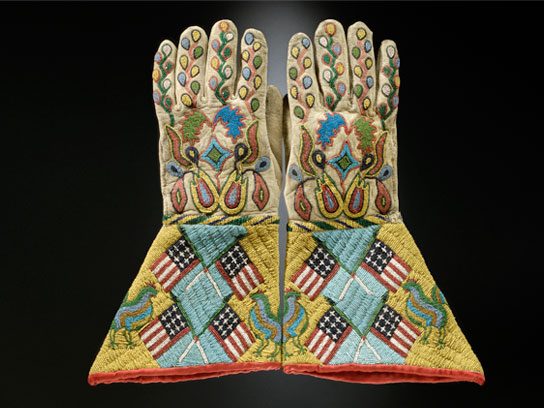
Gauntlets, ca. 1890
Sioux-Metis artist, North or South Dakota. Native tanned leather, glass and brass beads, cotton cloth.
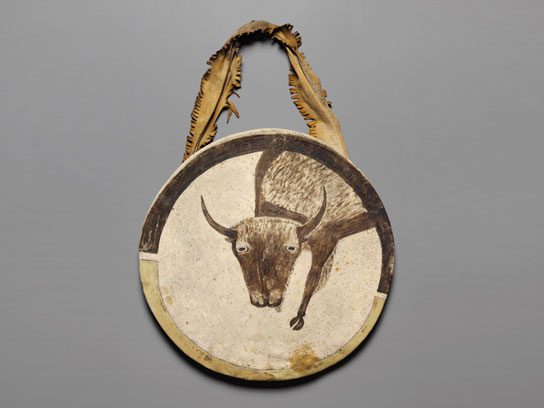
Shield, ca. 1850
Arikara artist, North Dakota. Buffalo rawhide, native tanned leather, pigment. Learn these facts about Native American culture that you didn’t hear in history class.
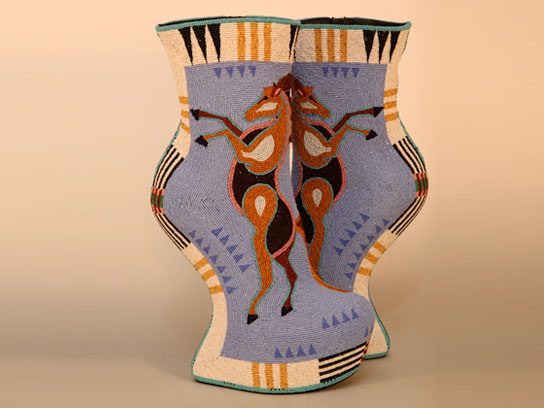
Horseshoes, 2014
Jamie Okuma, Luiseno/Shoshone-Bannock, California. Commercial shoes, glass, and 24 karat gold beads. Learn more–read about these important Native American traditions and beliefs.
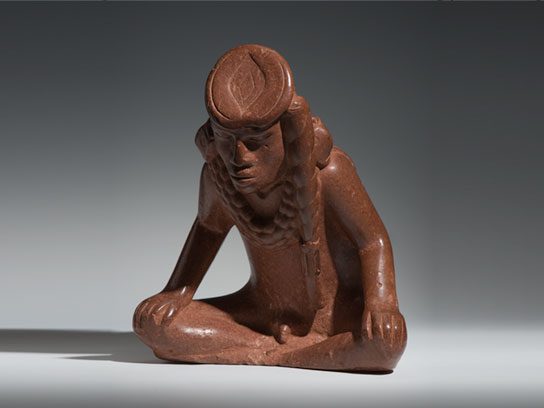
Human effigy pipe (The Hero Redhorn or Morningstar), ca. 1100-1200
Mississippian artist, Spiro Mound, Le Flore County, Oklahoma. Missouri flint clay.
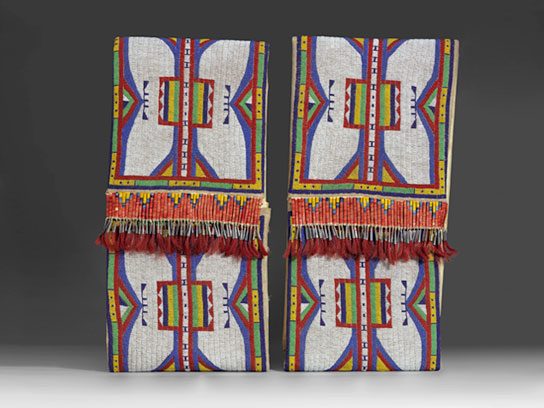
Pair of parfleche envelopes, ca. 1900-1910
Lakota (Teton Sioux) artist, North or South Dakota. Rawhide, native tanned leather, glass beads, porcupine quills, metal cones, horsehair.
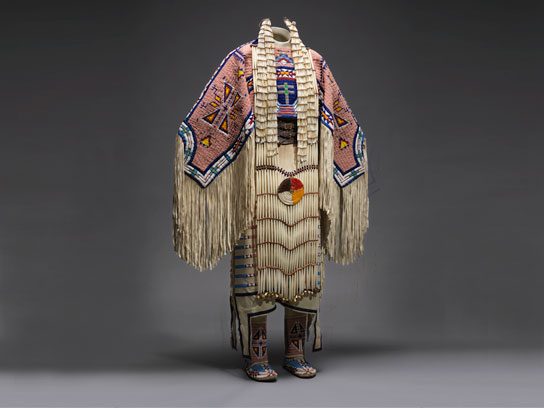
Woman’s dress and accessories, 2005
Jodi Gillette, Hunkpapa Lakota (Teton Sioux), North Dakota. Native tanned and commercial leather, glass and metal beads, cotton cloth, silk, dentalium shell, metal cones, horsehair, plastic, hair pipes, brass bells, porcupine quills, brass tacks, brass and metal studs, silver cones.
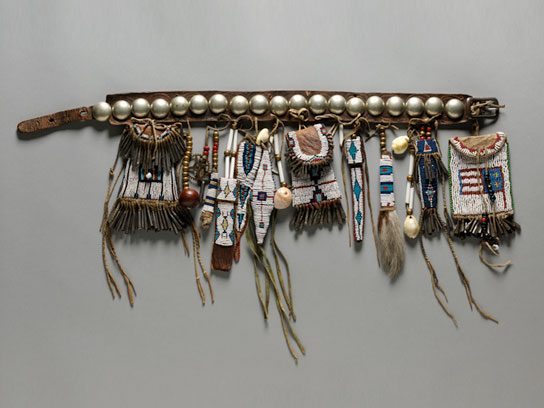
Girl’s belt set, ca. 1884
Southern Cheyenne artist, Oklahoma. Commercial and native tanned leather, German silver, glass beads, metal cones, cowrie shells, brass beads, bone, deer’s tail, pigment, shell, wooden bead, brass gear, metal key.
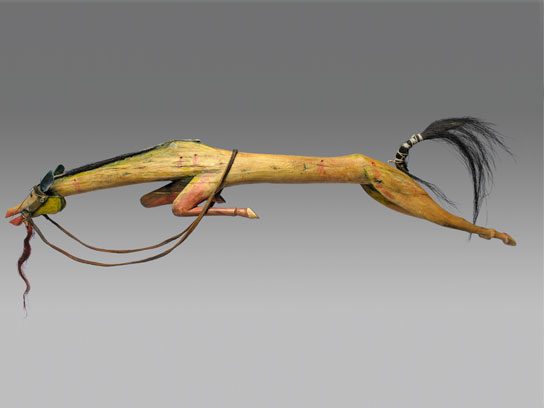
Horse effigy, ca. 1880
Hunkpapa Lakota (Teton Sioux) artist, Standing Rock Reservation, North or South Dakota. Wood, pigment, commercial and native tanned leather, rawhide, horsehair, brass, iron, bird quill.
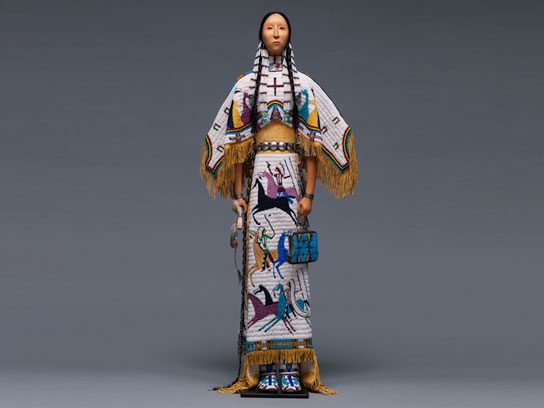
The Last Lakota Horse Raid Doll, 1991
Rhonda Holy Bear, Sans Arc, Two Kettle and Hunkpapa Lakota (Teton Sioux), Cheyenne River and Standing Rock Reservations, North and South Dakota. Wood, native tanned and commercial leather, glass beads, pigment, cotton cloth, hair, dentalium shells, abalone, German silver, metal cones, brass tacks and beads.
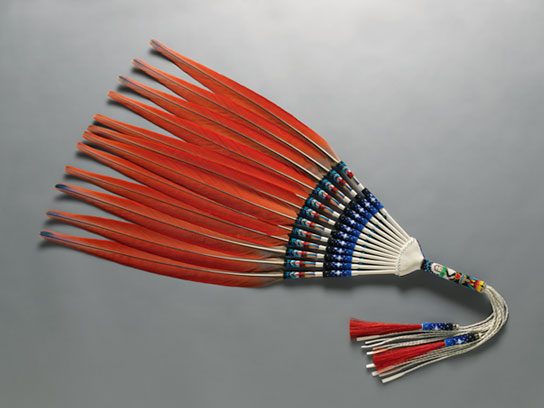
We Pray for Rain, 2011
Monty Claw, Dine (Navajo), New Mexico. Macaw, goose, rooster and pheasant feathers, glass and metal beads, commercial leather, horsehair.
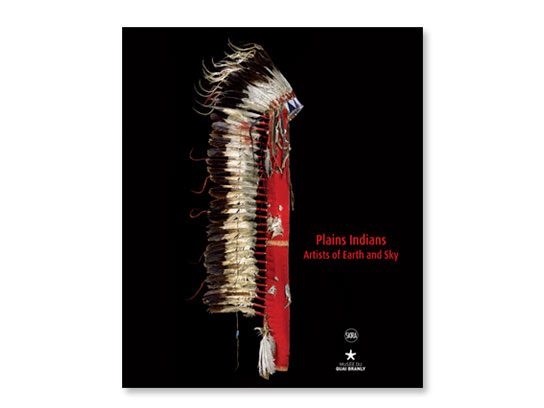
Exhibit catalogue
The images are all courtesy of the Nelson-Atkins Museum of Art in Kansas City, where the exhibit, The Plains Indians: Artists of Earth and Sky, will be on view through Jan. 11, 2015. The first major survey of Plains Indian artwork, this exhibit then travels to the Metropolitan Museum of Art in New York City where it will be shown from March 2 through May 10, 2015. An exhibit catalogue is available from Rizzoli. Shown on the cover is a feather headdress, made of eagle feathers by Oglala Lakota (Teton Sioux) artists, ca. 1865.



















